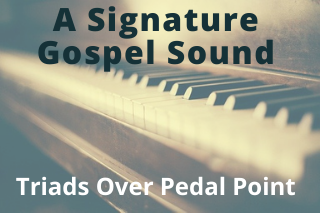The following two tabs change content below.


Greg Lee
Hi, my name is Greg Lee. I'm the creator of the Color Score Professional/Visual Chord Learning System. I love to share ideas and concepts about piano and keyboard playing in all styles of music. I believe the key to learning is having fun and making complicated things simple with visual tools and illustrations.
Latest posts by Greg Lee (see all)
- What is a minor/Major 7 Chord? - October 26, 2023
- 7 Chord Substitutions that Professionals Use - October 19, 2023
- 5 Simple Chord Tricks to Sound Amazing - October 5, 2023


 style of music. Even though there are so many styles of Gospel music, I want to focus more on the traditional gospel sound.
style of music. Even though there are so many styles of Gospel music, I want to focus more on the traditional gospel sound.










 Now that we've covered the elements that this triads over pedal point concept consist of, there's the gospel aspect of it also.
Now that we've covered the elements that this triads over pedal point concept consist of, there's the gospel aspect of it also.

 Of course, you can move beyond just two chords and play a IV chord beyond the original IV chord.
Of course, you can move beyond just two chords and play a IV chord beyond the original IV chord. A longer phrase playing the triad over pedal point exemplifies a more gospel sounding chord progression.
A longer phrase playing the triad over pedal point exemplifies a more gospel sounding chord progression.